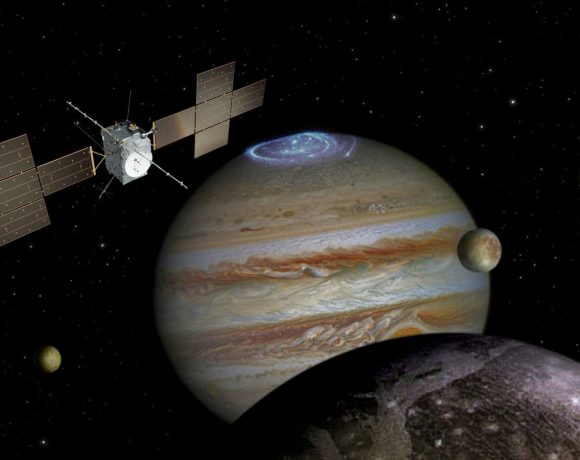Want to send your name to Jupiter’s icy moon Europa for free?

Join NASA’s Message in a Bottle campaign to do so
NASA is giving people from across the globe the exclusive opportunity to have their names stencilled on a microchip that will be attached to the US space agency’s Europa Clipper robotic solar-powered spacecraft due to travel 1.8 billion miles from Earth to explore Jupiter’s icy moon Europa to determine whether it could support life.
NASA’s Message in a Bottle campaign invites people worldwide to sign their names to a poem by the US Poet Laureate Ada Limón. The poem connects the two water worlds – Earth and Europa. The poem by Limón and the participants’ names will be engraved on a microchip attached to the Europa Clipper spacecraft. The campaign is a unique collaboration, uniting art and science, by NASA, the US Poet Laureate, and the Library of Congress.
Europa Clipper is set to launch from NASA’s Kennedy Space Center in October 2024, and by 2030, it will be in orbit around Jupiter. Over several years, it will conduct dozens of flybys of Jupiter’s icy moon Europa, gathering detailed measurements to determine if the moon has conditions suitable for life.
The deadline for submission of names for the Message in a Bottle campaign is December 31, 2023.
Join NASA’s Message in a Bottle campaign here: https://europa.nasa.gov/message-in-a-bottle/check-in/
NASA’s largest spacecraft
With its massive solar arrays and radar antennas, Europa Clipper will be the largest spacecraft NASA has ever developed for a planetary mission.

Europa Clipper’s primary science goal is to determine whether there are places below the surface of Europa that could support life as known by humans. The spacecraft’s intricate array of science instruments will work together to gather measurements of Europa’s internal ocean, map Europa’s surface composition and geology, and hunt for plumes of water that may be venting from the icy crust.
Sensitive electronics for the Europa Clipper spacecraft are enclosed in an aluminium-zinc alloy vault to protect the electronics from Jupiter’s intense radiation belts. A tantalum metal plate seals an opening into the vault. The inward-facing side of the metal plate will be engraved with ‘In Praise of Mystery: A Poem for Europa’ by Limón in the poet’s handwriting.
Ada Limón wrote an original poem, ‘In Praise of Mystery: A Poem for Europa’, dedicated to the Europa Clipper mission as part of her laureateship. On June 1, 2023, Limón unveiled the poem to launch the NASA Message in Bottle campaign.
Technicians in the Microdevices Laboratory at NASA’s Jet Propulsion Laboratory in Southern California will use an electron beam to stencil all the gathered names onto a dime-size silicon microchip. Each line of text is smaller than 1/1000th the width of a human hair (75 nanometers).
Jupiter’s largest moon
Europa is one of the largest of Jupiter’s more than 90 moons. It’s the sixth-closest moon on the planet. Europa and Jupiter’s three other largest moons – Io, Ganymede, and Callisto – were the first moons discovered beyond Earth. They are called the Galilean moons after Italian astronomer Galileo Galilei, who first observed them with a homemade telescope in January 1610.
The Jupiter satellite is primarily made of silicate rock and has a water-ice crust and probably an iron-nickel core. It has a very thin atmosphere composed primarily of oxygen. Cracks and streaks striate its surface, but craters are relatively few.
Scientists are almost certain that hidden beneath the icy surface of Europa is a saltwater ocean with about twice as much water as Earth’s global ocean. The Jupiter satellite may be one of the most promising places in our solar system for finding present-day environments suitable for some form of life beyond Earth. Scientists believe a saltwater ocean lies beneath its icy shell, holding twice as much water as Earth’s global ocean and possibly the chemical elements that are critical ingredients to life.
Featured image: A view of Europa captured by NASA’s Juno mission. Image: NASA













